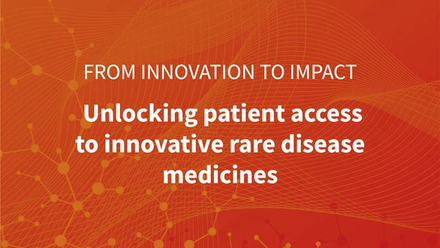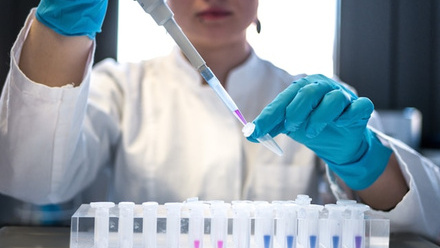Is the UK now the fiscal place of choice for drug development?

In this blog Richard Turner, the new vice chair of FTAC, examines the UK's overhauled R&D tax regime, which provides competitive incentives and a stable fiscal framework. The full article can be found here.
With the recent overhaul of the Research & Development (“R&D”) tax regimes, there is certainly a strong case to be made for the UK as a place of choice for drug development. It is not simply a matter of attractive cash tax incentives to support scientific innovation, as these incentives need to be complemented by a tax framework that supports the manufacture and exploitation of research through competitive tax rates, effective loss relief and support for further investment.
Over recent years this framework has fallen into place with the incremental shaping of a welcoming fiscal landscape. Most recently in the 2024 UK Autumn Budget – and for the first time in many years – there was a commitment to maintain the current R&D tax regime, which signals the final essential components needed for the UK to become the fiscal place of choice for drug development – assurance and reliability.
UK R&D incentives
It is very difficult to arrive at an accurate and objective comparison between R&D tax regimes, as although they are all generally framed around similar concepts, the rules of application differ: whether in terms of profitability, qualifying expenditure, rates of credit, eligible companies, caps or the location of activities. Nevertheless, following the recent merger of its regimes, the UK can be found in the top tier on most counts.
This article looks at drug development, which has a business model that is different to most other sectors given the sector’s requirement to outsource the long development cycles, and the fact that early stage development is generally undertaken by loss-making small and medium sized companies (“SMEs”). Consequently, for drug development, an effective R&D regime should include: competitive rates, no leakage (where certain activities may not be eligible), dependable repayable credits and certainty.
The volume-based rate of credit of 20% is higher than most countries, with an enhanced rate of 27% for loss making R&D intensive SMEs. It can always be monetised either through netting against tax payments, or as a repayable cash credit. The repayable credit is only capped in reference to the employment taxes paid by the company doing the research, and the corresponding amount derived from services provided by other UK affiliates. This is fair and is designed to ensure that overseas companies do not create special purpose vehicles in the UK with little substance through which to route expenditure and sweep up tax incentives.
There is, importantly, a critical exemption that allows early stage companies with lower relative headcount to disapply the cap where they can show that the intellectual property (“IP”) is being actively managed in the UK. The same cap will also help companies at later stages in the clinical phase, where significant levels of R&D is outsourced to clinical research organisations (“CROs”).
The categories of qualifying expenditure are comprehensive, especially considering the recent inclusion of data and cloud computing. Most importantly, to ensure that incentives were more appropriately targeted at the decision maker, all companies can now claim for expenditure that is contracted out to third parties, encompassing services provided by CROs and contract development and manufacturing organisations (“CDMOs”). The only significant omission is capital expenditure, and this is perhaps the one enhancement that could make the UK regime best in class. Incentives to encourage the establishment of clinical manufacturing facilities in the UK would go a long way in providing the platform needed to upscale to commercial manufacture and establish a leading presence in medicines manufacturing.
With the introduction of sub-contracting, i.e. work contracted out to third parties, as eligible expenditure for all claimants (under the original RDEC scheme, this was excluded), a restriction was placed on R&D activities undertaken overseas. As a policy measure, it makes sense to encourage the reshoring of key services to the UK, and similar policies are adopted by R&D regimes in a number of competing overseas territories. Why provide incentives to support highly paid jobs in other countries?
The impact of this restriction is mitigated by an exemption that permits qualifying expenditure when prerequisite conditions exist overseas, but not in the UK – for example, access to patients or relevant specialised manufacturing. Importantly, this is complimented with comprehensive guidance and examples – a number of which are specific to pre-clinical and clinical development – to ensure that the exemption is applied appropriately, whilst not compromising the policy objective or the integrity of the underlying principles.
Now that the UK decision maker is able to claim sub-contract expenditure, the service provider, i.e. the company carrying out the activities contracted to it, can only claim where its customer generally operates outside the UK, to ensure that incentives are not being given twice for the same expenditure. This has caused concern for some UK based CROs and CDMOs, but the flip side is that, as they are based in the UK, their appeal as a potential supplier to UK customers has increased significantly given the new bias to UK activities.
Since the introduction of the regimes in 2000, there has been a shadow of uncertainty over the extent to which service providers – such as CROs – are able to claim incentives. However, now with the change of entitlement and the consequential legislation and guidance, the position has been clarified allowing for much greater certainty (see ‘Example 10’ in HMRC’s guidance under the reference CIRD162100).
The result is a coherent framework that ensures that impactful R&D incentives are available for all expenditure in the pre-clinical and clinical supply chain, and are targeted to both the decision maker and UK supply. The UK Government should be applauded for their work in getting here.
The wider UK tax landscape
Valuable R&D incentives alone are not enough, and the fiscal environment needs to support subsequent growth as the economic benefits of successful R&D are realised. The wider UK landscape is now much more competitive, with the relief given for capital investment in buildings and machinery. The UK headline tax rate of 25% is not much to shout about, and although there is much more to consider in terms of the tax base and relief for expenditure, unfortunately the ‘headline’ rate carries disproportionate influence.
On the other hand, tax losses are a natural by-product of drug development (and there are often lots of them). These can be carried forward indefinitely and are less vulnerable to restrictions regarding change of ownership when compared to other countries and, most notably, the US. The tax losses can shelter early income, and then the patent box can be deployed to enhance the tax losses and subsequently reduce the effective tax rate close to 10%.
Pillar Two, the international initiative from the Organisation for Economic Co-operation and Development (“OECD”) to ensure that there should be a base rate of corporation tax no lower than 15%, could serve to dampen the effect of the patent box. However, if the claimant has other income from off-patent products taxed at 25%, once blended the potential benefit of the patent box should in many cases be fully realised.
Finally, the UK is very well placed to serve as the headquarter territory for biotechnology companies as they move beyond clinical development. The UK’s combination of exemption from capital gains for the sale of operating companies, not withholding tax on dividends paid to shareholders, and a comprehensive set of tax treaties makes it hard to beat.
Bringing all this together builds a compelling argument for the UK as the fiscal location of choice, not only for drug development, but for the subsequent growth and development of the founding company. This invites the question: why then are we not seeing, or expecting to see, the emergence of the next generation of Life Sciences multinationals?
Redomiciling to the US
The UK continues to be a centre of excellence for establishing start-ups from world class university research and a thriving biotechnology sector. However, it is increasingly the case that as those companies progress through clinical research, they see better long-term prospects across the Atlantic. These are hard to resist given the much better access to the finance needed for later stage trials and launch. It also ensures greater proximity to the most lucrative territorial market and – probably a perception that is self-fulfilling – access to management with a validated track record.
But what impact does this have on the tax profile of the company? Back in 2017, the UK corporation tax rate of 19%, which was for a time intended to be reduced further to 17%, compared very favourably to the US federal rate of 35% (and that was before additional state taxes). That used to be enough to keep companies firmly footed in the UK. Since then, however, the increase in the UK tax rate to 25% and the reduction of the US federal rate of 21% means that, once state taxes are factored in, they are broadly at parity in terms of rates.
A shift to the US can, nevertheless, still have unwelcome consequences. The first and most obvious option is to redomicile by inserting a new US holding company. However, this brings the US Global Intangible Low-Taxed Income Regime (“GILTI”) into play, which is likely to result in tax of at least 10.5% (increasing to 13.125% from 2026) on any income derived on UK-owned IP that may have otherwise been sheltered by tax losses, or subject to low rates of tax under the patent box. The impact can be much greater as, under US tax rules, relief on the underlying R&D expenditure is spread over 15 years, unless undertaken in the US where this is reduced to five years. Not only that, the potential valuable UK tax losses are at greater risk of forfeiture depending on how the company is operated.
The alternative is to establish a US subsidiary through which to employ the newly recruited US C-Suite. This comes with a wealth of tensions from a tax perspective, which leads to uncertainty over the taxing rights of future income and the prospect that subsequent R&D credits may be capped.
In short, redomiciling all becomes much more complicated and, generally, at a higher tax burden, which should be fully understood.
Looking ahead
The UK does make a very strong case to be seen as the fiscal place of choice for drug development but, of course, there are many other factors at play such as critical discussions on pricing, regulation, and the UK’s research base. There is optimism that through collaboration between industry, government, and via the Life Sciences sector plan which is set to be published later this year, we will see other key building blocks take shape, ready to fall into place.
In addition to his new role as vice chair of BIA's FTAC, Richard is Senior Managing Director at FTI Consulting.






